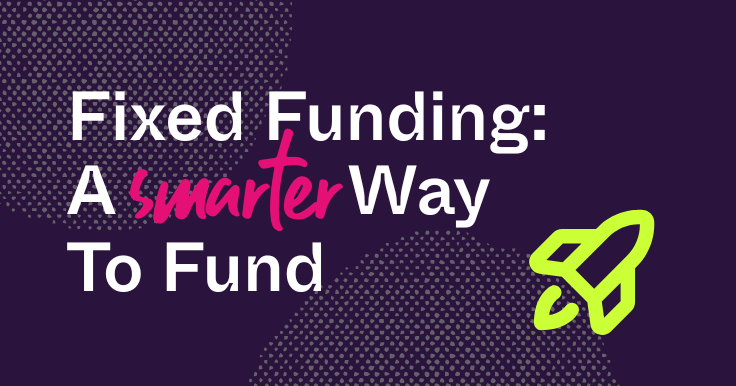It was 9:15 pm on a Sunday evening when I got a call from a temporary employment agency asking me if I wanted to be a Customer Happiness agent for “Indie-something,” and if so, to show up at 8:45 am on Monday morning for the job. I showed up and thought, “Yeah, this is pretty cool…” It’s been almost two years now. Since then I’ve had the fantastic and sometimes even mind-blowingly awesome opportunity to work for Indiegogo. I started here with no knowledge of crowdfunding and have come a long way in understanding the ins and outs of what makes a campaign successful and how to engage a community to rally support. I have even run and participated in several campaigns myself. With my recent move working as a campaign specialist on the design, technology, and hardware team, I’ve found myself climbing a steep learning curve once again.
I went from managing customer support inquiries, including campaign coaching, bug tracking, and partner relationship management, to questions about advanced pixel tracking, ad retargeting, public relations, digital media agencies, and manufacturing. Hardware teams are often already highly sophisticated and savvy, sometimes with team members who have run campaigns in the past. I soon realized that working with hardware campaigners was a bit different than what I was used to and that there are a lot of moving parts.
I thought to myself, “Wow! I need to start wrapping my brain around all of these new and advanced crowdfunding tools—this is what makes a good hardware campaign!” Facebook Ads. Google Adwords. SEO.
To be honest though, the more I become familiar with technology and hardware, the more I realize that the basics still apply–maybe even more so. Advanced tools are meant to amplify the fundamental concepts of crowdfunding, not the other way around. A campaigner can create a great campaign, with a great product, have an engaged audience at launch, and do pretty well–add the advanced tools and you’ve got a real winner. But without those fundamental building blocks in place–without the right pitch, without an audience that cares–there’s nothing for advanced tools to amplify.
Basically, my role is to set up campaigns to launch with awesome results. What does that entail? I’m glad you asked! Like I said, there is nothing more important than the basics.
Community
Having an engaged audience before launch is the most fundamental concepts of crowdfunding. You might be thinking, “..but how big of an audience do I need?” Great question! For hardware campaigns it’s actually relatively easy to calculate because you have a good understanding of the dollar amount of each contribution. Because we know that email will have the highest conversion rate, we use email list size to reflect audience size and can put together a simple equation.
([Size of email list] X [5%]) X [price point] = 30% of stated goal
You may be wondering where we got “30%.” Well, we find that campaigns that hit thirty percent of their funding goal on the first day are much more likely to go on to raise their goal. If, based on your current email list, these numbers don’t add up, we recommend you take some more time to engage your audience and build a stronger list. The last thing you want is to launch with disappointing results. You will also get more sleep before launch knowing that you’ve done everything you can to set yourself up for success. If you’re looking for more information on how to build an email list and run a hardware campaign, take a moment to download our Hardware Handbook and check out the 4 Steps to Email Outreach Success.
Have A Good Pitch
A pitch can have a great impact on conversion rate and actually, a simple pitch is best. You need to connect with your audience quickly and effectively with limited images and text. You don’t want to confuse or overload anyone with too much information. Be specific, concise, and showcase why your product is fantastic.
Here are a few examples for recommended formatting of hardware campaign pitches:
Notice how the format tends to be: :
- Intro Statement: “This is Core,” “Meet Canary,” “Introducing XYZ”
- ‘Hero’ image
- 1-2 sentence description of the product
- Image(s) of the product in context
- Press
- Product features
- How it works
- Manufacturing/fulfillment timeline
- Team bios and pictures
Post Campaign Updates
Campaigns that post regular updates (every 5 days), will raise on average 218% more than campaigns that post no updates. Why? Another great question! As your campaign progresses you will begin to collect what I call a “funders pool.” You can mobilize this group of devoted funders to share and spread the word within their own networks, effectively expanding your campaign’s reach. Updates will also help to reinforce a sense of community, which we already know is vital to crowdfunding.
Another way to use campaign updates to drive contributions is by starting a referral contest. Referral contests offer an incentive for sharing the campaign, and because Indiegogo has the most advanced referral tracking system in the industry, the process is easy and a huge value-add. A referral contest typically is announced via a campaign update and would read along the lines of:
- “For every referral you bring in, get $X back on your order!”
- “Bring in (X number of contributions) and get Y.”
- “The top X referrers win Y prize!”
Of course, feel free to get creative.
Let’s say you’re mid-campaign and not sure what the next steps are. Maybe you’re thinking about offering a perk add-on or some awesome new swag. Once again, great idea! ask your contributors what they want most. It’s also a great way to continue interacting with your audience and gathering vital campaign information. You can get this information through an Update or a Survey Form.
Here’s an example. The campaign owner of Rocketbook wanted to offer a new perk and reached out to the audience to gather more information. If you take a look at the Updates tab, they actually made it a requirement to share the campaign via social media to participate in the vote. This was pretty innovative and the first time Indiegogo had seen such a creative strategy. Not only did they gather the information necessary to offer a perk that was most likely to drive conversion, the update itself brought in traffic through the social media spread. Genius if you ask me!
Other good topics for updates are:
- Product timeline updates
- Milestones met
- Stretch Goals
- Videos and images
- New perks, add-ons, swag
- Thank you, thank you, thank you!
Tell Your Story
You are people. You’re probably cool people too!
Telling your audience about who you are and why you’re passionate still applies to hardware campaigns. I was particularly excited to work with Yerka: The Unstealable Bike because of their story. The team was made up of three young Chilean Engineering students that set out to create a product they were incredibly passionate about. Their background alone made for a really fun story and they weren’t afraid to show personality throughout the campaign whether it was in their video, pitch text, or pre-launch marketing emails. If you have a good story to tell, why not make your already awesome campaign even better by showcasing the people behind the scenes? Not only does this bring a human element into your campaign, but encourages trust, which is paramount.
Take Away
Build an audience and build a campaign page that converts–do the “act of crowdfunding” so that all of the new, advanced tools will have a foundation to build on. With these powers combined, you too can be Captain Hardware!
2 Responses
You must be logged in to post a comment.




Wow! I don’t have a campaign to crowdfund yet, but I’ll keep this advice in mind when I do. By the way, how would you feel if I make a online news show about crowdfunding?
Feel free to check my new campaign out! –> An amazing ANDROID Game: AnimalFly
–> https://igg.me/at/animalfly
#Indiegogo #crowdfunding #Kickstarter